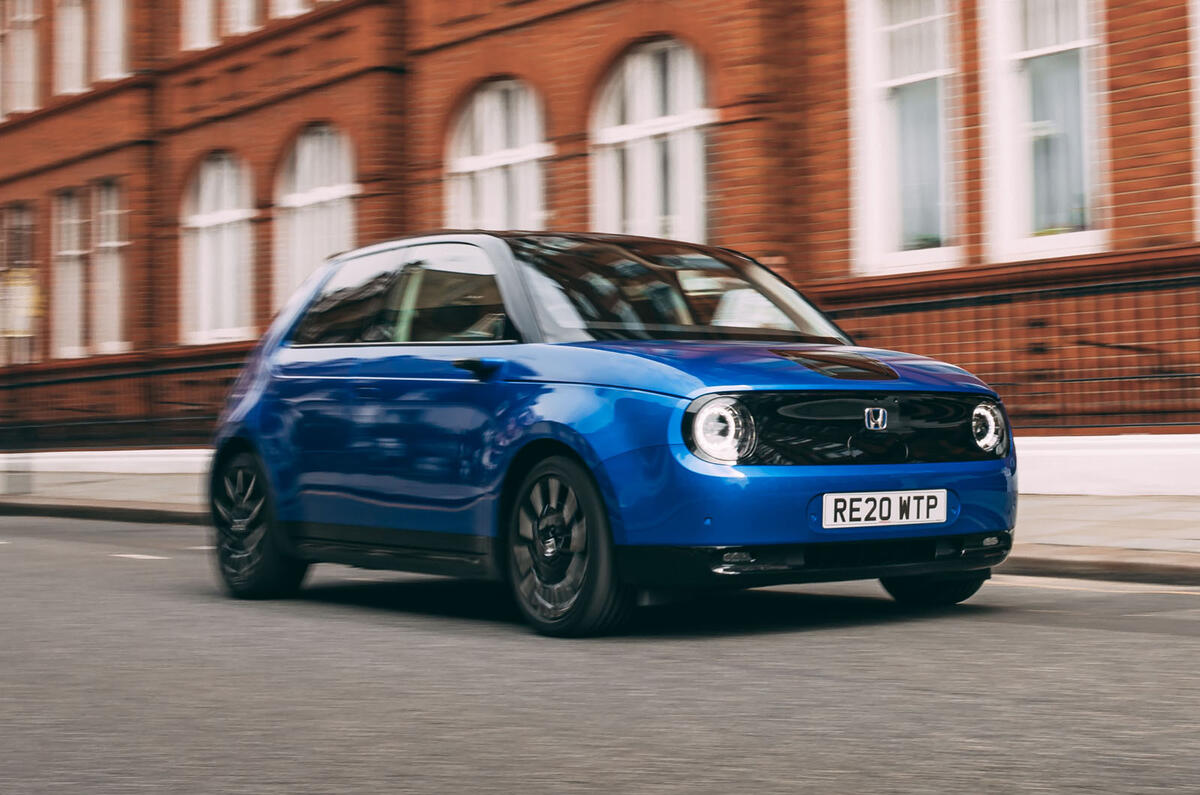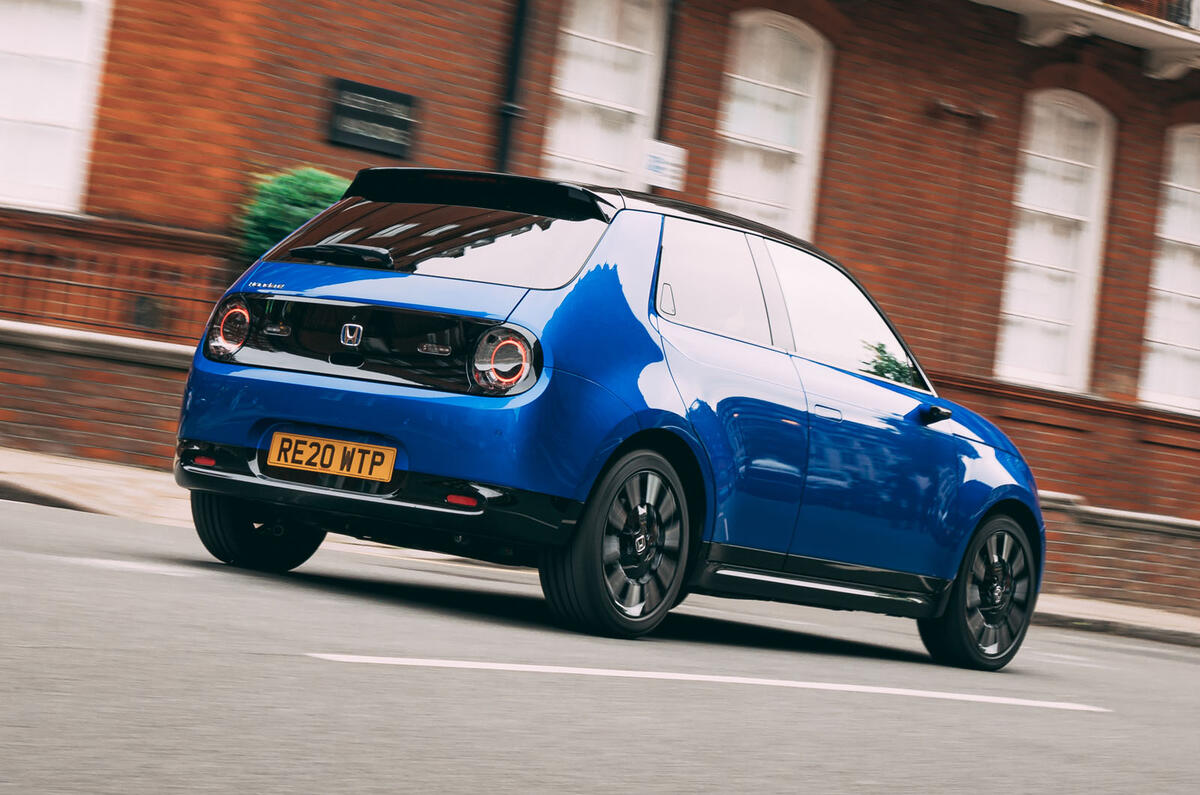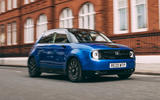The E’s performance levels are well matched to the cut-and-thrust environments in which it will inevitably operate. By and large, this doesn’t seem like the kind of electric car that will sell on the powerful, darting response of its driving experience – and yet it still has a very sprightly, instant turn of speed when you need it.
Getting from 30mph to 50mph, as you might when leaving a built-up area or zipping past a slow-moving tractor or lorry, takes just 3.0sec. Although that’s not quite as swift as the i3 REx we tested in 2013 (2.7sec) or the bigger Kia e-Niro and Hyundai Kona Electric, that’s enough to make the E seem very energetic in and around town and well able to seize any opportunity or plug any gap in city traffic you’re likely to spot for it.
There are two drive modes – Normal and Sport – which, among other things, dictate just how responsive the E is to throttle inputs. In Normal, there’s a need to use a fair amount of pedal travel to rouse the Honda into urgent life.
When you do, though, the way this rear-engined EV squats down on its haunches and springs forward is much more in keeping with the level of response you’d expect from a car with 232lb ft of instantly available torque. Alternatively, bump the rocker switch to select Sport mode and that initially soft throttle response is sharpened considerably.


























































